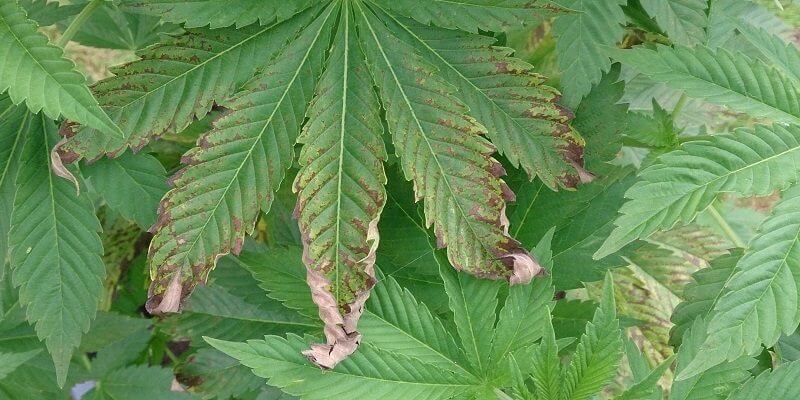Caterpillars are one of the most voracious and harmful pests that can affect our plants during the outdoor growing season.
It is a very aggressive pest that, if it is not controlled in time, will cause irreversible damage to our plants. But it can be identified, prevented and eradicated if we are fast and careful. As always, prevention and early detection is essential to avoid the serious damage that this pest will cause to our harvest.
What are caterpillars?
Caterpillars are the larvae of the lepidoptera family, which after their metamorphosis turn into butterflies (moth moths). There are more than 10,000 types of caterpillars but all are characterized by a long, segmented body, six legs and five pairs of pseudopaths with small hooks. They are polyphagous, so they feed on different types of plants.
The plague of caterpillars begins when butterflies and moths lay their eggs on our plants, so if we observe these animals hovering around our crop is a bad sign.
The life cycle of the caterpillar is very simple: once the eggs hatch, the caterpillars emerge, feeding on the leaves and flowers of our plants until they reach the right size to move on to the pupa phase. After 1 week to 1 month, the butterfly emerges.

The damage of the caterpillars is visible from the moment they hatch their eggs, since they feed without stopping, and we will be able to observe bites in our leaves and flowers. In addition, they have a predilection for flowering plants, which causes that their attacks favor the appearance of moulds and rottenness in the buds, a real disaster.
Caterpillars like to be hide in the underside of leaves and stems, so we must check and pay special attention to these parts of the plant, as well as the remains of the excrements that will be left behind.
How to avoid the caterpillar attack.
Obviously, the best thing we can do to avoid severe damage to the caterpillar is to prevent it, but how can we prevent it from appearing? Here are a few tips to help you avoid the caterpillar attack as much as possible:
- Constant and exhaustive revision of our culture to make an early detection, as well as to observe that we are not possessive butterflies and moths for our plants.
- Cultivate plants such as thyme or basil that repels them or cabbage or soybeans for which you have a predilection.
- Colocar trampas impregnadas de feromonas femeninas para atraer y atrapar a los machos e impedir que sigan reproduciéndose.
- Use Bacillus thuringiensis: bacteria that is used to treat caterpillar plague once we are already infested but can also be used as a preventative.
If prevention has not worked.
If prevention has not worked and we have this annoying plague in our crop, not everything is lost, although a quick detection will help a lot, as caterpillars are voracious devourers and will not stop eating until they reach pupa.

The direct damage caused by this pest deriving from bites on leaves and buds, together with indirect damage caused by bites on buds that cause mould and rot, cause serious problems in our plant leading to death.
To treat caterpillar plague in our plants we can use one of these methods:
1. Remove them manually:
It may seem a bit rudimentary and even rather unpleasant but removing all the big caterpillars we can with our hands helps in eradicating this plague.
2. Biological control:
Biological control involves the controlled introduction of natural predators of the pest that we want to eradicate, so that they are responsible for eradicating it.
It is a totally ecological method in which you do not need to spray or water our plants with any product. The caterpillar’s natural predators are Coccinella septempunctata, commonly known as ladybird or Orius spp, a predatory bug of this type.
3 To pulverize the plants:
Spraying the plants with Bacillus thuringiensis, the same bacterium that we mentioned in the prevention section, is an effective anti-caterpillar remedy that we can use once we have been invaded by this pesky plague.
This bacterium penetrates the plant tissue that the caterpillar later ingests, causing irreversible damage to its digestive system as it contains toxic substances for the caterpillars.
Watch out for outdoor crops.
In short, we must be vigilant when growing outside crops for this type of pest that can quickly kill everything. We must use prevention methods and frequently observe our plants to make a quick detection and act as soon as possible by trying to get rid of the caterpillar before it kills our crop.
You may also be interested in these articles about the red spider mite or the Whitefly.




i just want to know how to get rid of and to kill the budworms.i have got the neem oil and it says it has bt in it
is there any homemade methods to kill the worms in my marijuana plants
I pick them off. But they say AzaMax works just don’t spray when flowering
My plants are already budding, what do I do to get rid of the worms? Is there a natural way?
same problem i picked 20 or so out…….got some rot brown im picking out but any place brown dig deep in bud and kill the little so and sos..didnt want to spray this close to harvest ……a good answer would be great …..just keep picking them and hope my trichomes tirn amber soon still milky……good luck
If you have more than two weeks left to cut, you can apply a natural product such as potassium soap or neem oil.
Good luck!